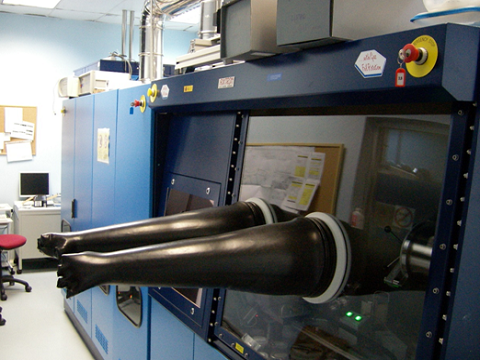III-V Semiconductors
Our groupWe are a group of about 15 people made up of professors, doctors, PhD students and technicians. Our team is made up of physicists, telecom engineers, electronic engineers, material engineers and industrial engineers. Our activities in III-V solar cells started around 1985. We are integrated, along with four other PV research groups, in the Instituto de Energía Solar (Solar Energy Institute) of the Universidad Politécnica de Madrid (Technical University of Madrid), which is located on the campus of the School of Telecommunications Engineering, in the Ciudad Universitaria, in Madrid. Moreover, we have also reliability facilities at the Campus Sur of the Technical University of Madrid. |
Our workWe believe that high efficiency is a must in the development of reliable and low cost photovoltaic systems. Therefore, our goal is the research of the highest efficiency solar cells, namely III-V multijunction solar cells, for both terrestrial and space applications taking into account reliability and cost. In the case of terrestrial multijunction solar cells, we optimize their performance for 1,000 suns and beyond since high concentration is a powerful manifold to reduce cost. Our work is structured around the following research lines:
|
Activity and other data of interest
|
We cover the whole value chain of each III-V multijunction solar cell type of the aforementioned research lines. We cover the modelling, epitaxial growth, fabrication and characterization of the solar cells. In the solar cells we develop, the reliability analysis by means of accelerated ageing tests guides our progress. Cost is also present in the skyline of our research since one of our final goals is the technology transfer. We can summarize our activity in the following items:
As a result of this activity, the III-V Semiconductors Group has authored around 300 papers in JCR journals and in the proceeding of scientific conferences and has produced 15 doctoral thesis. Several members are serving in several scientific committees (IEEE-PVSC, CPV, CDE, etc.) and have organised several conferences. We are usual reviewers of scientific and technical journals such as IEEE Electron Device Letters, IEEE Transactions on Electron Devices, Progress in Photovoltaics, Solar Energy Materials and Solar Cells, etc. The group has led more than 50 R&D projects including several EU and ESA projects. An active technology transfer and collaboration with Spanish, European, North American and Japanese companies marks out the trajectory of the group who holds six patents. The III-V Semiconductors Group has therefore a leading position in III-V multijunction solar cells. Specifically, the role played by the group in CPV solar cell technology widely recognize and as a consequence the group has edited the first Handbook of Concentrator Photovoltaic Technology that has been published in June 2016. |
||
 |
||
|
Contact: Head of III-V Semiconductor Group: Prof. Carlos Algora E-mail: algora@ies-def.upm.es Keywords |


